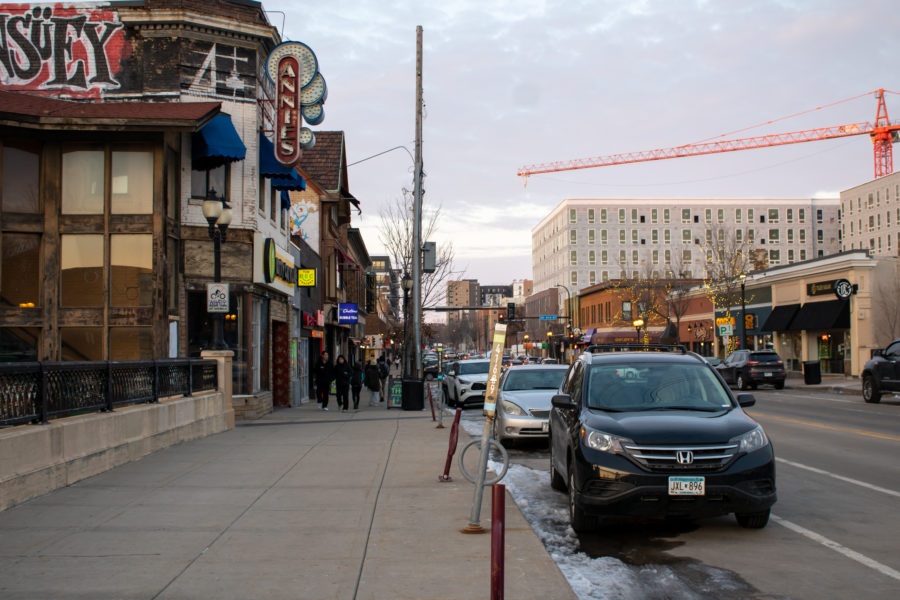The daily interactions and sidewalk conversations between Dinkytown’s unhoused people and University of Minnesota students provide them with a unique relationship to campus life.
The unhoused population that stays in the streets of Dinkytown represents a crucial part of many students’ day-to-day operations in Dinkytown.
After a biking accident broke his ribs and cost him his job in 2017, Michael has been housing insecure in the Dinkytown area.
Although he recognizes many would be discouraged in his situation, Michael said he has a more positive outlook. While standing outside of the Dinkytown Target, he smiles and jokes with the students that pass by.
“These people help you. I know these people, they know me,” Michael said. “I love it.”
Chris ‘Zannman’ Zann voluntarily became homeless in 2018 to write a book. He and his co-author, a University of Wisconsin journalism student, outline a few of the characters he met in Dinkytown, advice for those who may be experiencing housing insecurity and some of his experiences living on the streets of Dinkytown.
“[The book] is not just about how complex the issue of homelessness is but also how it relates to mental health care, addiction treatment and the greed of housing developers,” Zann said. “For students who want to learn more or think they might experience homelessness, they’ve just got to email me [at zannman@me.com] to get a free copy.”
After spending years as a homeless person in Dinkytown, Zann said he has nothing but admiration and praise for students.
“Phenomenal — there is no other adjective I could use to describe the relationship between the homeless and students,” Zann said.
Start a conversation
Zann said years of experiencing homelessness in Dinkytown showed him that a simple conversation between an unhoused person and a student can have incredible benefits for both parties.
“If you’re going to make any assumption, stop and have a conversation,” Zann said. “Just know that 90% of the time, you are dealing with a wonderful human being.”
Kelly, who defines himself as “a hustler” rather than homeless, has spent a few years in Dinkytown. Kelly said while you don’t always have to give him money, passersby should acknowledge his existence.
Walking straight by or giving a side-eye is just another way of saying “f*** you,” Kelly said.
Zann said a friend of his that ended up unhoused had drug-dealing parents who made him sell drugs as a kid. Another friend came from a wealthy family and went to the University but ended up homeless after struggling with drug abuse.
Regardless of how they ended up in their situation, Zann said it is important to humanize them.
“You don’t know what challenges they’ve had,” he said.
How to help
Students are crucial supporters of the homeless, according to Zann. Through cash, gift cards and food donations, Zann estimated students donate around $50,000 per year to people experiencing homelessness near the University.
If you want to support the unhoused community with food or drinks, some good things to buy are V8 juice, Slim Jims, Chef Boyardee cans or cups of ramen, according to Zann. Tougher foods like Cliff Bars aren’t always helpful because some of the unhoused population have dentures, gum disease or lack teeth, so they are unable to eat them.
Zann said hygiene products such as shampoo, toothpaste, underwear, toilet paper and feminine hygiene products for women are essential.
However, some homeless people like Michael want more than just food and water.
“I just want Gopher Hockey tickets,” Micheal said.














